
A collectable is any object regarded as being of value or interest to a collector. Collectable items are not necessarily monetarily valuable or uncommon. There are numerous types of collectables and terms to denote those types. An antique is a collectable that is old. A curio is something deemed unique, uncommon, or weird, such as a decorative item. A manufactured collectable is an item made specifically for people to collect.
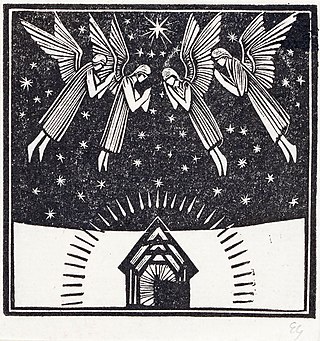
An artist's proof is an impression of a print taken in the printmaking process to see the current printing state of a plate while the plate is being worked on by the artist. A proof may show a clearly incomplete image, often called a working proof or trial impression, but in modern practice is usually used to describe an impression of the finished work that is identical to the numbered copies. There can also be printer's proofs which are taken for the printer to see how the image is printing, or are final impressions the printer is allowed to keep.
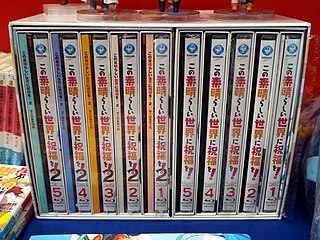
A boxed set or box set is a set of items traditionally packaged in a box, hence 'boxed', and offered for sale as a single unit.
In printmaking, an edition is a number of prints struck from one plate, usually at the same time. This may be a limited edition, with a fixed number of impressions produced on the understanding that no further impressions (copies) will be produced later, or an open edition limited only by the number that can be sold or produced before the plate wears. Most modern artists produce only limited editions, normally signed by the artist in pencil, and numbered as say 67/100 to show the unique number of that impression and the total edition size.

Wacky Packages are a series of humorous trading cards featuring parodies of consumer products. The cards were produced by Topps beginning in 1967, first in die-cut, then in peel-and-stick sticker format. There were 16 series produced between 1973 and 1977, with some reprints and several new series released up to the present day.
The bibliographical definition of an edition is all copies of a book printed from substantially the same setting of type, including all minor typographical variants.
A remaster is a change in the sound or image quality of previously created forms of media, whether audiophonic, cinematic, or videographic. The resulting product is said to be remastered. The terms digital remastering and digitally remastered are also used.
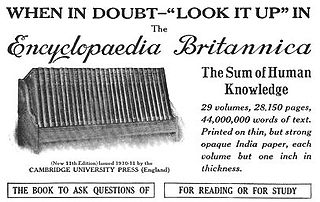
An out-of-print (OOP) or out-of-commerce item or work is something that is no longer being published. The term applies to all types of printed matter, visual media, sound recordings, and video recordings. An out-of-print book is a book that is no longer being published. The term can apply to specific editions of more popular works, which may then go in and out of print repeatedly, or to the sole printed edition of a work, which is not picked up again by any future publishers for reprint.
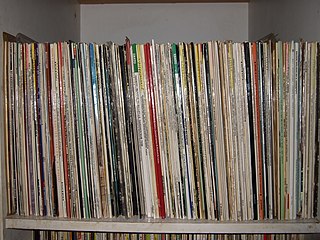
Record collecting is the hobby of collecting sound recordings, usually of music, but sometimes poetry, reading, historical speeches, and ambient noises. Although the typical focus is on vinyl records, all formats of recorded music can be collected.
The Overstreet Comic Book Price Guide is an annually published comic book price guide widely considered the primary authority on the subject of American comic book grading and pricing in the hobby/industry. Numerous observers connect the expansion of the direct market distribution system and the proliferation of comic book specialty shops to the broader recognition and acceptance of Overstreet's annual guide. This guide is considered a standardized inventory and pricing system within the comic book industry.

An album cover is the front packaging art of a commercially released studio album or other audio recordings. The term can refer to either the printed paperboard covers typically used to package sets of 10 in (25 cm) and 12 in (30 cm) 78-rpm records, single and sets of 12 in (30 cm) LPs, sets of 45 rpm records, or the front-facing panel of a cassette J-card or CD package, and, increasingly, the primary image accompanying a digital download of the album, or of its individual tracks. In the case of all types of tangible records, it also serves as part of the protective sleeve.
A pre-order is an order placed for an item that has not yet been released. The idea for pre-orders came because people found it hard to get popular items in stores because of their popularity. Companies then had the idea to allow customers to reserve their own personal copy before its release, which has been a huge success.
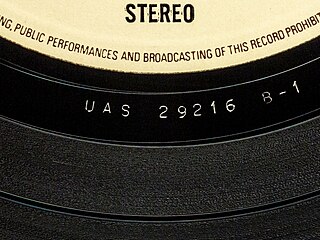
A matrix number is an alphanumeric code stamped or handwritten into the run-out groove area of a phonograph record. This is the non-grooved area between the end of the final band on a record's side and the label, also known as the run-off groove area, end-groove area, matrix area, or "dead wax".

The score from The Empire Strikes Back composed by John Williams. Between Star Wars and The Empire Strikes Back, Williams had also worked with the London Symphony Orchestra for the scores to the films The Fury, Superman and Dracula. The score earned another Academy Award nomination for Williams. Again, the score was orchestrated by Herbert W. Spencer and Angela Morley, recorded by engineer Eric Tomlinson and edited by Kenneth Wannberg with supervision by Lionel Newman. John Williams himself took over duties as record producer from Star Wars creator George Lucas.
In the music industry, a reissue is the release of an album or single which has been released at least once before, sometimes with alterations or additions.

Ghosts I–IV is the sixth studio album by the American industrial rock band Nine Inch Nails, released by The Null Corporation on March 2, 2008. It was the band's first independent release following their split from longtime label Interscope Records in 2007. The production team included Nine Inch Nails frontman Trent Reznor, studio collaborators Atticus Ross and Alan Moulder, and contributions from Alessandro Cortini, Adrian Belew, and Brian Viglione.

Insurgentes is the debut full-length solo album released by British musician and record producer Steven Wilson, known for being the founder and frontman of progressive rock band Porcupine Tree. The album was recorded all over the world in studios from Mexico City to Japan and Israel, between January and August 2008, and released in November 2008 as a special deluxe multi disc mail order version, with retail release to follow in February 2009. According to Wilson himself, the album contained "the most experimental song-based music [he had] made." The album is named after the Avenida de los Insurgentes, the longest avenue in Mexico City near which part of it was recorded.
Weathermaker Music is the record label owned by the American rock band Clutch and their manager Jack Flanagan. Weathermaker Music LLC was formed in June 2008. Weathermaker Music was mostly known to work with Clutch and their side project, the psychedelic jazz-rock alter ego The Bakerton Group.

Bad 25 is the 25th anniversary edition reissue of American singer-songwriter Michael Jackson's seventh studio album Bad (1987). This is the second album by Jackson re-released on its 25th anniversary, the first being Thriller 25 (2008). Bad has sold 35 million copies worldwide, making it one of the best-selling albums of all time. Bad 25 was released on September 18, 2012, with co-operation with Epic, Legacy Recordings and MJJ Productions. Along with the original album, Bad 25 contains demo recordings recorded during the Bad era, with the deluxe edition also containing a live CD and DVD of Live at Wembley July 16, 1988, Jackson's performance at Wembley Stadium in the United Kingdom during his Bad world tour.
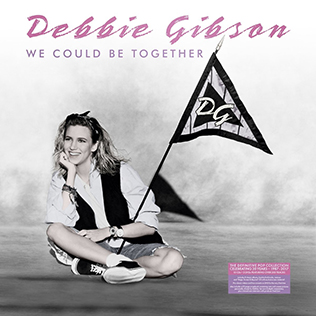
We Could Be Together is a career-spanning box set by American singer-songwriter Debbie Gibson. Named after Gibson's 1989 single of the same name, it was released on October 20, 2017 by Edsel Records, celebrating her 30th anniversary in the music industry. The 12" x 12" box set consists of eight of her studio albums appended with bonus tracks, a remix album, and a bonus album of rare tracks, plus three DVDs and a 32-page coffee table book. An Amazon exclusive release included a signed 12" x 12" frameable print and was limited to 750 copies.













